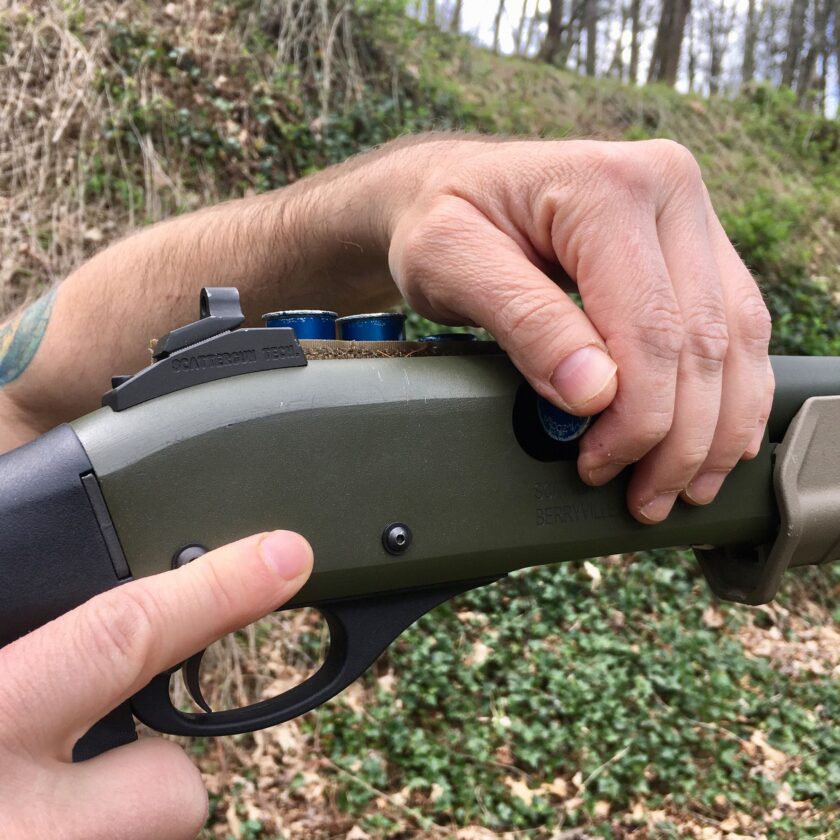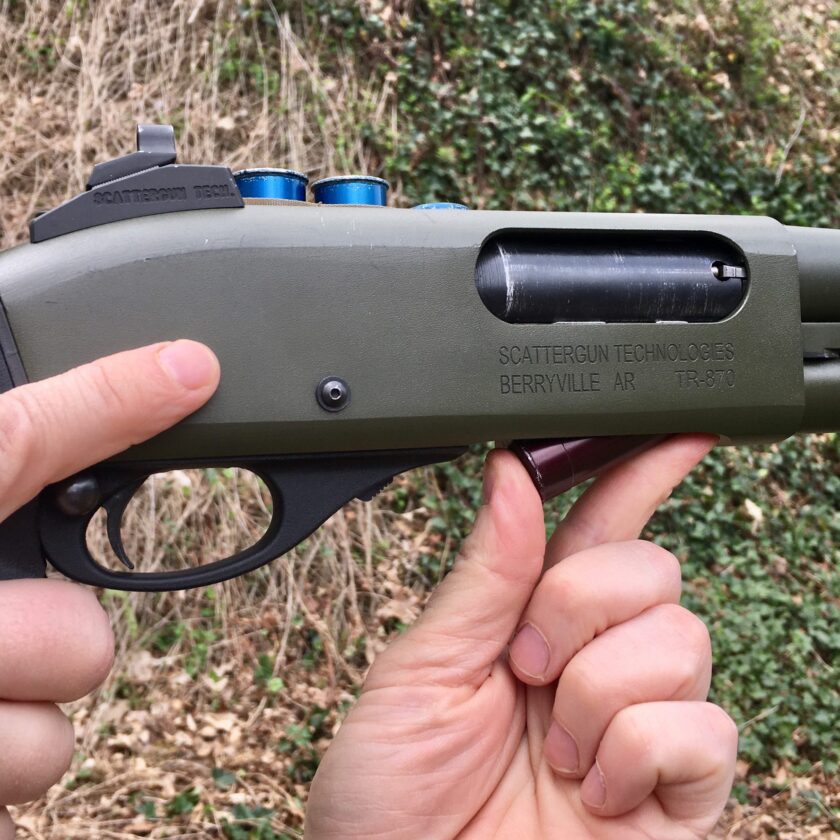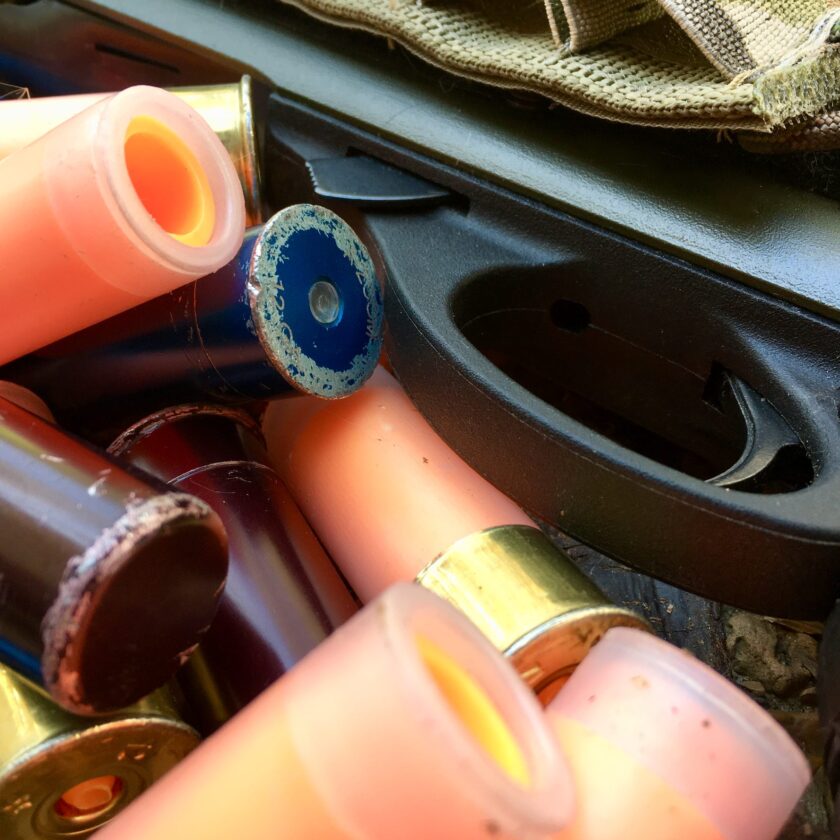If you’re looking for some tips on practicing your shotgun skills, check this out.
This article contains affiliate links.
Shotgun
I’m not an expert on the shotgun. I have never attended a formal shotgun class. I have some military training with the M1014 and have qualified with 870s for another agency. I have quite a bit of time actually using a shotgun, though. I have carried around a breaching shotgun quite a bit, and I felt comfortable enough to carry a shotgun as a primary weapon (in certain terrain) in Afghanistan. That said, I am still very much a student of the shotgun. This month was dedicated to improving my abilities with what I do know.
I call most of my shotgun sessions “shoot 1/load 1” sessions. That’s not quite accurate; some were, but some of these sessions were much more varied. Let’s get into it. The first two weeks were, literally, “shoot 1/load 1”. I worked really hard to myelinate some basic techniques that I haven’t worked on in a long time. For ten minutes I stood there in front of the target doing the following:
- Present from low- or high-ready,
- Ensure good push/pull technique and press a shot,
- Run the slide,
- Support hand comes back and engages the safety,
- Support hand reloads one round from the side-saddle into the magazine tube.
This very simple drill actually does quite a bit for you. First, it gets you into a good stance and allows you to practice your “up” drill: getting the gun from a comfortable position of carry up onto the target and acquire the sights quickly. Second, it accustoms you to running the slide. Ensure you run the slide fully, every single time; myelinate the full motion of the slide to avoid short-stroking later.
To avoid getting into the habit of only shooting one shot, I also worked in strings of “shoot 2, 3, or 4” followed by reloading 2, 3, or 4 rounds into the gun. This is where “shoot 1/load 1” becomes a principle: load one for every one fired. One of the major goals of running a shotgun is to replace every round fired with a fresh round. During each of these sessions I also worked in several reps of firing the gun completely dry. This necessitated loading a round into the chamber first, then a round (or rounds) into the magazine.
Reload techniques: My preference for reloading the chamber is with a brass-up shell in the carrier, and going over the top of the receiver. I have worked on this quite a bit and I’ve found that when go under the receiver I have about a 25% greater chance of dropping the shell. If I had an optic on my gun this might be different, so as long as none of you guys donate an optic (hint, hint) I should be good to go with this technique.

I prefer brass-down shells for loading the magazine tube. I know some guys like all their brass going one way. If that describes you, you can load your shells all brass-up or brass-down. Techniques for all are demonstrated in excellent detail here.

Short-Stocking: I didn’t spend all the time in the world on this, but I do think it is a solid close-quarters technique. If you’re moving through a structure with your shotgun this does work fairly well. I didn’t practice it exclusively, though, and still worked presenting form the low and high ready positions.
Snap cap lesson learned: use the light, plastic snap caps, not the solid aluminum A-Zooms. The caps will be ejecting straight up. You don’t have to take one of those solid A-Zooms to the face more than once to realize it’s not ideal. Just a couple other quick thoughts on snap caps: the A-Zooms are great for loading, the lighter, plastic ones are better for ejecting. The light, plastic shotgun caps are similar in weight to an empty shell and their ejection is true. However, they are so light that the lifter can easily knock them out of your hand when loading one into the magazine tube. The heavy A-Zooms are much closer in weight to a live shell and much easier to load into the magazine tube. I didn’t’ think it would make as much difference as it did.

Transitions: I worked in a couple of sessions of transitioning from an empty shotgun to my pistol. After I completed the drill with my handgun I holstered, got my shotgun back in the condition I wanted it it (loaded). I know what you’re thinking: “why would you never need to practice that?” First, read this. Second, even if I wasted 30 or 40 minutes I still managed to get 4+ hours of really applicable shotgun practice, in addition to five hours of practice with my EDC gun. What did you do this month?
EDC Handgun Sustainment
This year I have already spent a full month (January) practicing presentation, two weeks practicing malfunction clearance, two weeks practicing reloads, and two weeks each with SHO and WHO. This month was sustainment of all of these skills.
If you’re looking for a good, month-long dry practice plan you could probably do much, much worse than this.
Presentation: My presentation sessions are still my favorite. I try to incorporate as much variety as possible while still focusing on the simple act of drawing the firearm and orienting it accurately toward the target. I began standing squared up with the target, with the target to my left or right, and the target at varying distances. At very close ranges I incorporated the lateral side-step.
Reloads: I began each reloads session with at least five normal draws. Two at close range with a lateral side-step (one in each direction), one at close range from retention, and at least two at sufficient range that sight-focus is necessary. After that I moved into reloads following the standard rotation of emergency/slide-lock, speed, and tactical reloads described here. I had enough time to go through the cycle at 10 – 12 times per session, for approximately 66 repetitions of emergency reloads, and 33 each of speed and tactical reloads.
Malfunctions: I began each malfunction session with at least five normal draws. Two at close range with a lateral side-step (one in each direction), one at close range from retention, and at least two at sufficient range that sight-focus is necessary. After that I moved into malfunctions on a repeating cycle of 2 Type I (tap-rack-reassess) malfunctions, one stovepipe malfunction, and one double-feed/FTE malfunction. A ten minute session let me practice this cycle between seven and ten times. Over the month I practiced each malfunction approximately 51 times.
SHO & WHO: I began each session with the standard minute or so of standard presentation. Next, I spent roughly four minutes presenting and pressing the trigger with the strong or weak hand. Next, I executed approximately four slide-lock reloads with the appropriate hand only, followed by two repetitions each of the standard malfunctions. I tried to leave myself enough time at the end of each of these sessions doing two-handed draws. I did this so as not to prime myself to draw one-handed should I have to draw for real in the near future.
My Results
Below are my day-by-day results of the past month.
January 1 – 15: 150 minutes, January 16 – 31: 160 minutes
February 1 – 15: 150 minutes, February 16 – 29: 140 minutes
March 1 – 15: 150 minutes, March 16 – 31: 160 minutes
April 1: 10 minutes presentation, 10 minutes shotgun shoot 1/load 1
April 2: 10 minutes reloads, 10 minutes shotgun shoot 1/load 1
April 3: 10 minutes malfunctions, 10 minutes shotgun shoot 1/load 1
April 4: 10 minutes SHO, 10 minutes shotgun shoot 1/load 1
April 5: 10 minutes WHO, 10 minutes shotgun shoot 1/load 1
April 6: 10 minutes presentation, 10 minutes shotgun shoot 1/load 1
April 7: 10 minutes reloads, 10 minutes shotgun shoot 1/load 1
April 8: 10 minutes malfunctions, 10 minutes shotgun shoot 1/load 1
April 9: 10 minutes SHO, 10 minutes shotgun one-handed operation
April 10: 10 minutes WHO, 10 minutes shotgun shoot 1/load 1
April 11: 10 minutes presentation, 10 minutes shotgun shoot 1/load 1
April 12: 10 minutes reloads, 10 minutes shotgun shoot 1/load 1
April 13: 10 minutes malfunctions, 10 minutes shotgun shoot 1/load 1
April 14: 10 minutes SHO, 10 minutes shotgun shoot 1/load 1
April 15: 10 minutes WHO, 10 minutes shotgun shoot 1/load 1
April 16: 10 minutes presentation, 10 minutes shotgun shoot 1/load 1
April 17: 10 minutes reloads, 10 minutes shotgun shoot 1/load 1
April 18: 10 minutes malfunctions, 10 minutes shotgun shoot 1/load 1
April 19: 10 minutes SHO, 10 minutes shotgun shoot 1/load 1
April 20: 10 minutes WHO, 10 minutes shotgun shoot 1/load 1
April 21: 10 minutes presentation, 10 minutes shotgun shoot 1/load 1
April 22: 10 minutes reloads, 10 minutes shotgun short-stocking
April 23: 10 minutes malfunctions, 10 minutes shotgun transitions
April 24: 10 minutes SHO, 10 minutes shotgun shoot 1/load 1
April 25: 10 minutes WHO, 5 minutes shotgun shoot 1/load 1
April 26: 10 minutes presentation, 15 minutes shotgun transitions
April 27: 10 minutes presentation, 10 minutes shotgun shoot 1/load 1
April 28: 10 minutes malfunctions, 10 minutes shotgun shoot 1/load 1
April 29: 10 minutes SHO, 10 minutes shotgun shoot 1/load 1
April 30: 10 minutes WHO, 10 minutes shotgun transitions
Monthly Target: 300 minutes
Monthly Actual: 300 minutes
Cumulative Target to Date: 1210 minutes
Cumulative Actual to Date: 1210 minutes (20 hours, 10 minutes)
Cumulative Actual w/ Carbine & Shotgun: 1,810 minutes (30 hours, 10 minutes)
Current Streak: 121 days (131 including last 10 days of 2019)
Tobacco Free: YES
Next Month
Next month I will take a break from two-a-days and go back to pistol only. I will spend the month working on two enabling skills to go with the skills I already have: working with a handheld light, and performing all of my primary (presentation/trigger) and secondary (reloading and malfunction clearance) skills while moving.





